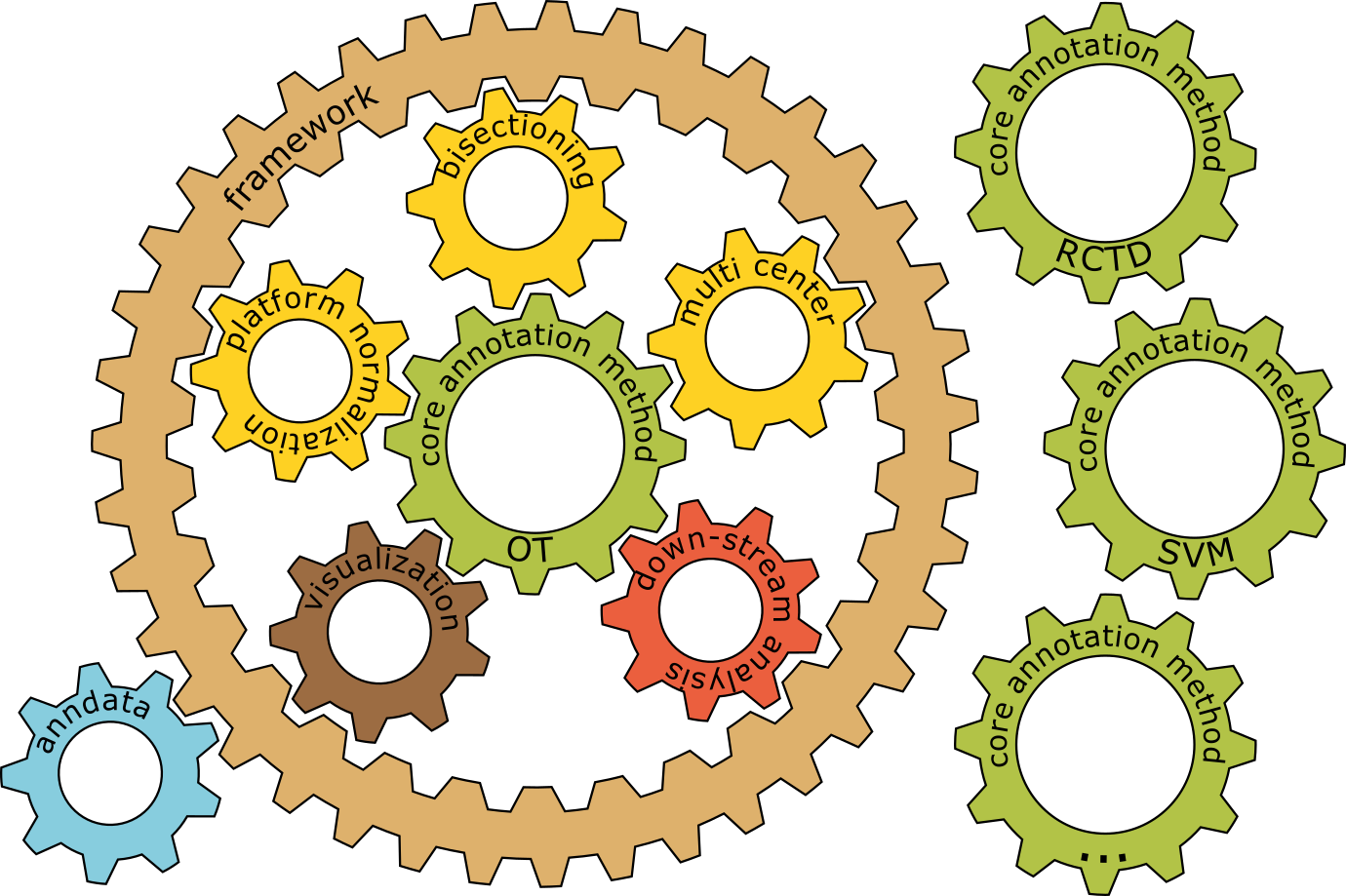Welcome to the TACCO documentation!¶
TACCO Library¶

The Python module TACCO is a self-contained annotation-centered framework providing tools from preprocessing to analysis and visualization of the annotations. It integrates easily into the existing Scanpy-based bioinformatics ecosystem [Wolf18] as it works on the same data structures and shares the known module structure into sub-modules, e.g. tacco.pp, tacco.tl, and tacco.pl, containing basic and advanced functionality and plotting capabilities.
Aside from these standard sub-modules there is an extra sub-module tacco.utils, containing optimized math routines, wrappers for dense and sparse BLAS-based functionality, dense and sparse distance calculations that are orders of magnitude faster than the standard scipy methods, and a sparsity optimized implementation of the Sinkhorn-Knopp matrix scaling algorithm. This module is the computational core of TACCO and the basis of all integrated fast annotation methods.
As a framework TACCO also provides a common interface for annotation, which can be used not just with the annotation methods integrated directly in TACCO, but with a broad set of other annotation methods in order to use all the high-level functionality provided for integrated methods. TACCO already comes with many wrappers for third party methods, e.g. for Tangram [Biancalani20] and RCTD [Cable21], which can serve as examples for how to wrap methods implemented both in python and R. Some methods do not have cell-type fractions as output, but a differently normalized mapping between types or cells and space or bead, which does not include information about the absolute cell type fractions (e.g. Tangram and NovoSpaRc [Nitzan19]). These methods can still be wrapped using the pseudo-bulk cell-type fractions of the reference data - their results for cell-type fractions, especially in comparison to other more direct methods, have to be taken with a grain of salt.
An overview of TACCO can also be found in the accompanying manuscript [Mages23].
How to install TACCO¶
Up to date installation instructions are available in the README of the TACCO repository.
How to use TACCO¶
Apart from the quickstart in the README of the TACCO repository, there are examples for selected use cases which are backed by their own repository.